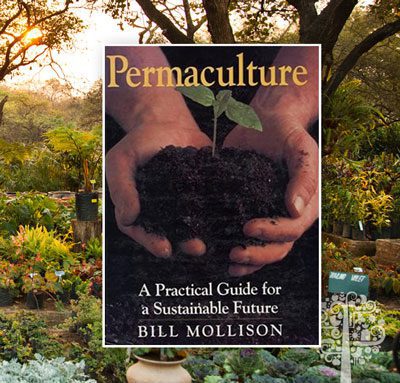I discovered the world of permaculture in Australia by listening to two wild surfing brothers talk about the Permaculture Design Program they were enrolled in at the local College. Several years later, a friend left a copy of Bill Mollison’s hefty book on my cabin floor; Permaculture, A Practical Guide for a Sustainable Future. I started to dive deep, having just lucked into a very affordable 2.4-acre piece of Laurentian forest.

Observing The Land
One of the biggest takeaway’s from that book was the concept of just being on your land in observation mode for as long as possible before making any major disturbances. Disturbances release energy, and this new energy is noticed by nature. Once this begins, you should be ready with your intentions. You should also be ready with your shovel!
As I think about my experiences with permaculture in the last ten years, I see how important it is to pay attention to your intuition and instinct. At the beginning of a relationship with a piece of land, I put all the big plans aside.
If you intend to live your best life while being a steward and protector of the land, begin by first merely getting to know your neighbors. What kind of birds live on your property? When do they arrive and when do they go? What kind of critters come out at night to explore the neighborhood? What has already happened on the land? One old-timer told me that when he was a kid, my land used to be a family farm and that there were cows all over the hillside. My land now is completely covered with huge old-growth hardwoods. I would never have thought that it used to be pasture.

You will be instinctively drawn to where the water is; the springs, seeps, creeks, natural ponds, vernal pools, Beaver ponds. Thoroughly investigate; walk, sit, and even crawl on your land in all its seasons. It took me two years to decide where to dig my surface well. For some, it might take two minutes.
When I see talented land designers shaping incredibly lush landscapes with food forests and ponds and swales and hedgerows, using key-line design and massive machines, I am intimidated by all the technical aspects and intricate drawings.
In that uncertainty is where you can fall back on what is free: your intuition, the feeling of your bare feet walking on your land, to the time you spent dreaming and wandering and falling in love with the place. As long as you have that good feeling, that you considered what that particular landscape wants or needs to become more biodiverse, then it can all work out with a little tweaking along the way.
Maybe it doesn’t need much help. Above all, should be the constant practice of observation, of listening and smelling and dreaming, of caring for the little piece of paradise that you have chosen to inhabit.